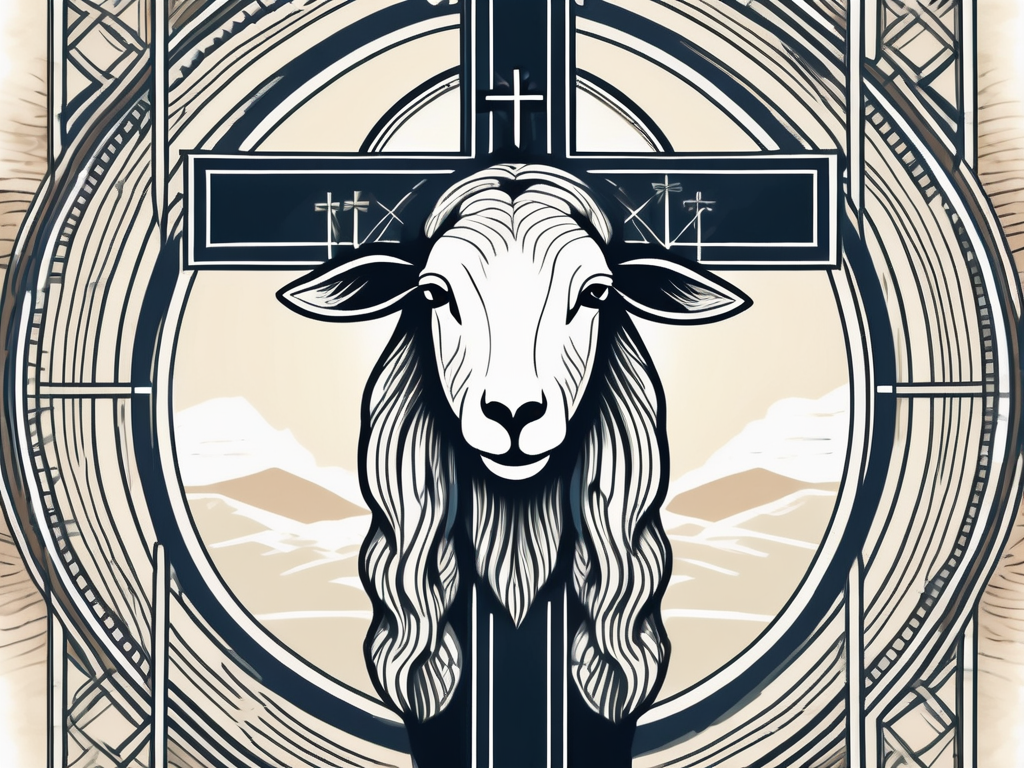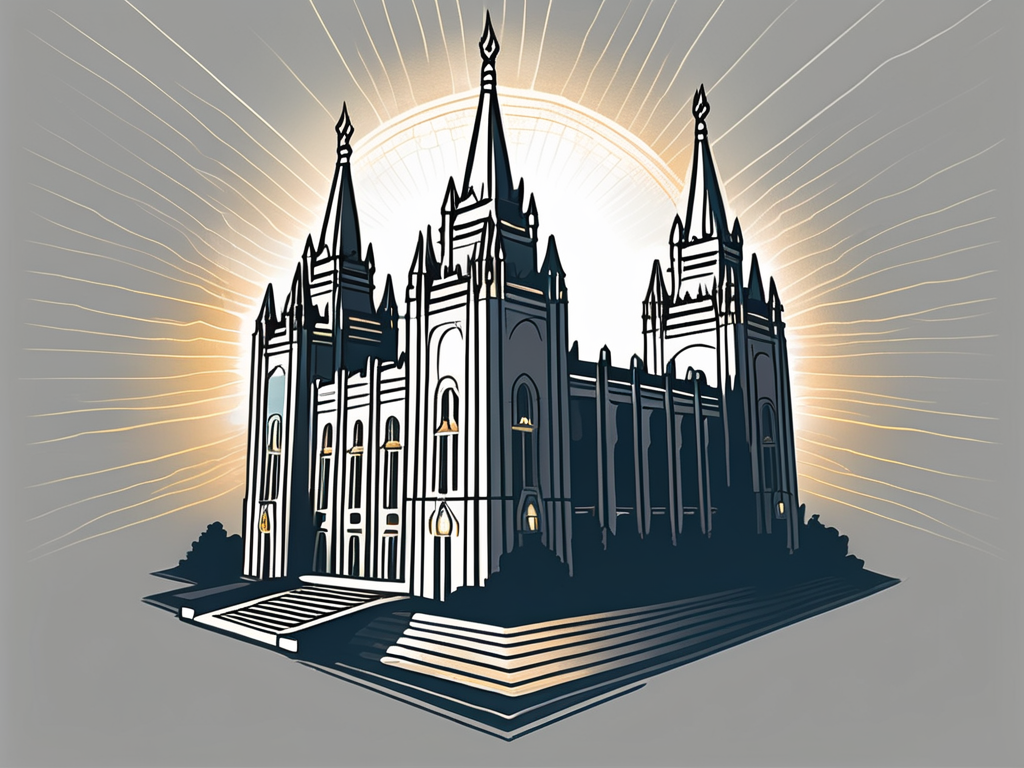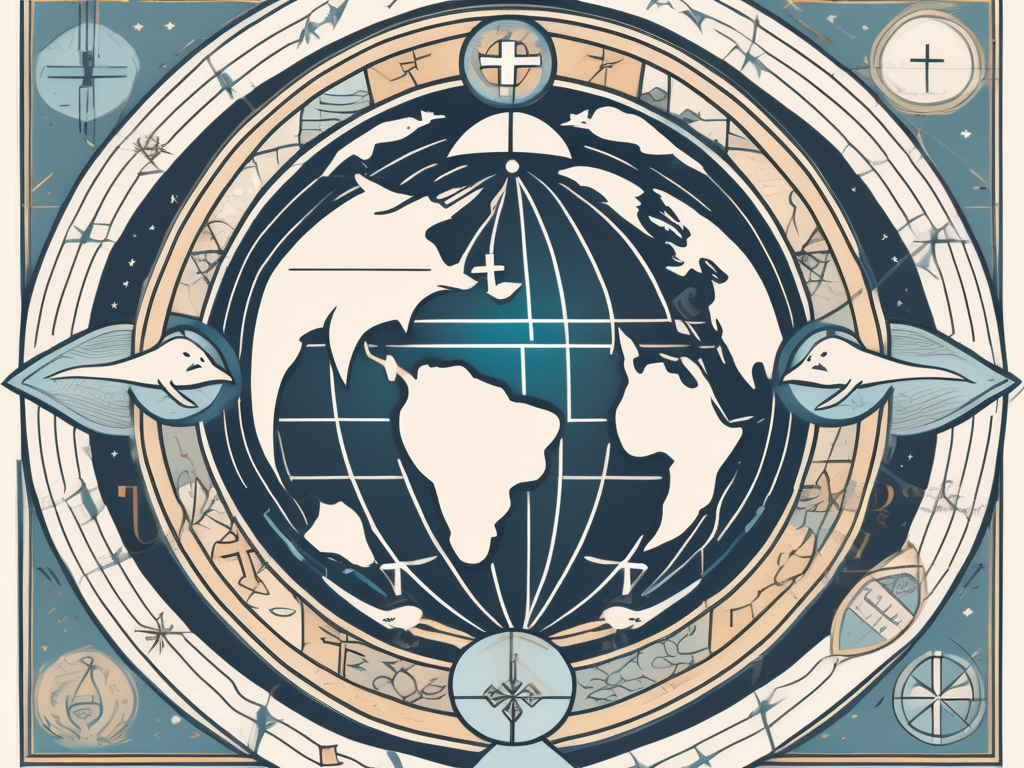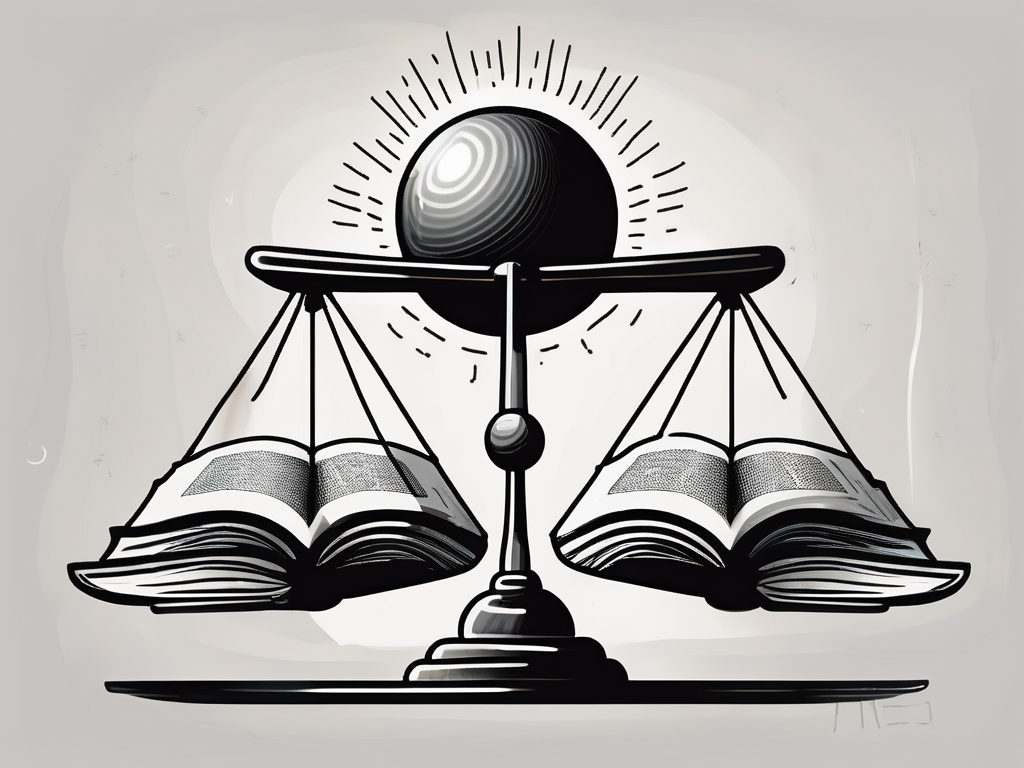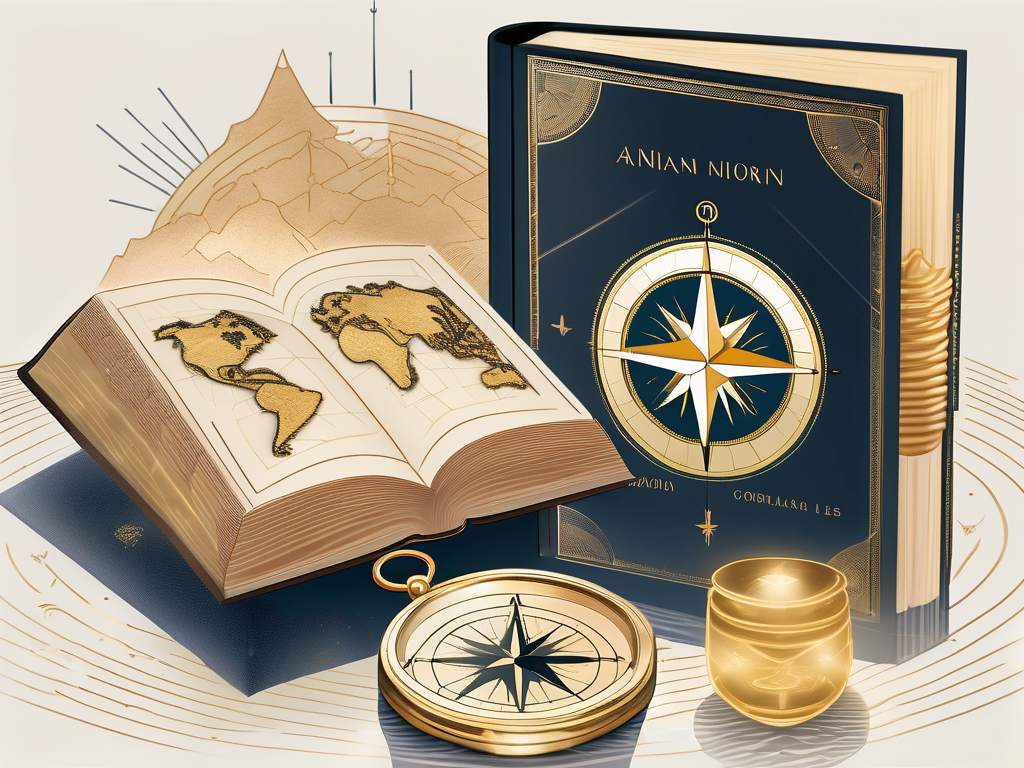Mormon beliefs on the Trinity may be different from mainstream Christian beliefs, but understanding these differences is crucial to gaining a well-rounded perspective. In this article, we will explore the concept of the Trinity in Christianity and delve into the distinct Mormon perspective on this essential doctrine. We will also discuss the historical development of the Mormon Trinity, its implications, and address common misconceptions surrounding it.
The Concept of Trinity in Christianity
Before delving into the Mormon perspective, let’s first understand the traditional Christian view of the Trinity. In Christianity, the Trinity refers to the belief that God exists as three distinct persons – the Father, the Son (Jesus Christ), and the Holy Spirit – but is still one God. This unique concept is rooted in the Bible and has been a fundamental tenet of Christian faith for centuries.
The concept of the Trinity is not easily comprehensible, as it deals with the nature of God, which is beyond human understanding. However, theologians and scholars have attempted to explain this complex mystery using various terms and analogies.
The Traditional Christian View of the Trinity
In traditional Christian theology, the Trinity is often described using terms such as co-equal, co-eternal, and consubstantial. This means that the three persons of the Trinity share the same divine essence, are equal in power and glory, and have existed for all eternity. This understanding of the Trinity emphasizes the unity of the three persons while acknowledging their distinctiveness.
One analogy used to explain the Trinity is that of a three-leaf clover. Just as the clover has three distinct leaves, each with its own shape and identity, they are still part of the same clover plant. Similarly, the Father, Son, and Holy Spirit are distinct persons, yet they are united in their divine essence.
Theological Basis for the Trinity in Christianity
The theological basis for the Trinity is found in various biblical passages, including the baptism of Jesus, where all three persons – the Father, the Son, and the Holy Spirit – are present simultaneously. This event is seen as a revelation of the triune nature of God.
Furthermore, the New Testament contains verses that emphasize the divinity of Jesus Christ and the role of the Holy Spirit in the lives of believers. For example, in the Gospel of John, Jesus refers to Himself as the Son of God and claims to be one with the Father. Additionally, the apostle Paul writes about the Holy Spirit’s role in guiding and empowering believers.
Throughout the centuries, theologians have engaged in deep theological reflection and debate to articulate and defend the concept of the Trinity. This ongoing exploration has led to the development of various creeds and doctrines that seek to explain the nature of God as three-in-one.
It is important to note that the concept of the Trinity is not meant to be a mathematical equation or a logical puzzle to be solved. Rather, it is a profound mystery that invites believers to embrace the complexity and richness of God’s nature.
As Christians continue to explore and contemplate the Trinity, they are reminded of the depth of God’s love and the unity of the divine community. The Trinity serves as a reminder that God is not a distant and impersonal force, but a relational God who invites humanity into a loving and transformative relationship.
The Mormon Perspective on the Trinity
Mormon theology, also known as LDS (Latter-day Saint) theology, holds a unique perspective on the Trinity. While Mormons consider themselves Christians, they approach the Trinity from a distinct angle that differs from more mainstream interpretations.
The Godhead in Mormon Theology
In Mormon doctrine, the term “Godhead” is often used instead of “Trinity” to describe the divine nature. The Godhead consists of three separate beings – Heavenly Father, Jesus Christ, and the Holy Ghost. Mormons believe that these three beings are distinct individuals who work together in perfect unity and harmony to accomplish the purposes of God.
Expanding on the concept of the Godhead, it is important to note that Mormons believe in the eternal nature of these beings. They see Heavenly Father, Jesus Christ, and the Holy Ghost as having always existed and will continue to exist throughout eternity. This belief in eternal beings adds depth to the Mormon understanding of the Godhead and their role in the plan of salvation.
Furthermore, Mormons believe that the Godhead is actively involved in the lives of individuals. They believe that Heavenly Father, Jesus Christ, and the Holy Ghost communicate with humans through personal revelation, guiding and directing them in their daily lives. This understanding of the Godhead’s involvement in personal affairs brings a sense of comfort and assurance to Mormons, as they believe they are never alone in their journey through life.
Differences Between the Mormon and Christian Trinity
One significant difference between Mormon and traditional Christian beliefs on the Trinity is the view of the physical nature of God. Mormons believe that God has a physical body, while many Christian denominations consider God as purely spiritual. This belief stems from the Mormon teaching that humans are created in the image of God, both spiritually and physically. Mormons see this physical aspect of God as a way to better relate to Him and understand His divine nature.
Expanding on the concept of divine potential, Mormons believe that all humans have the ability to progress and become like God. This belief sets them apart from traditional Christian views on the Trinity, as it emphasizes the idea of eternal progression and the potential for individuals to become gods themselves. Mormons see this as a central part of their faith and a source of hope and motivation to strive for personal growth and development.
Moreover, the Mormon perspective on the Trinity also includes a unique understanding of the role of Jesus Christ. Mormons believe that Jesus Christ is the literal Son of God and that He played a crucial role in the plan of salvation. They see Him as the Savior and Redeemer of all humanity, offering the opportunity for forgiveness and eternal life through His atoning sacrifice. This emphasis on the role of Jesus Christ in the Mormon understanding of the Trinity highlights the central importance of His teachings and example in their faith.
In conclusion, the Mormon perspective on the Trinity offers a distinct understanding of the divine nature and the relationship between God, Jesus Christ, and the Holy Ghost. Through the concept of the Godhead, Mormons believe in the unity and harmony of these three separate beings who work together to accomplish the purposes of God. The belief in the physical nature of God and the potential for individuals to become like Him further sets the Mormon perspective apart from traditional Christian interpretations of the Trinity. This unique perspective adds depth and richness to the Mormon understanding of the divine and shapes their beliefs and practices as Latter-day Saints.
Historical Development of the Mormon Trinity
The development of the Mormon Trinity concept can be traced back to Joseph Smith, the founder of Mormonism, and the early days of the Church. Smith’s revelations played a pivotal role in shaping Mormon theology and understanding of the Godhead.
Joseph Smith and the Early Church’s View on the Trinity
Joseph Smith’s First Vision, a pivotal event in Mormon history, is often considered the foundation of his understanding of divine beings. This vision led Smith to conclude that the Father and the Son were separate beings with physical bodies. These early revelations laid the groundwork for a different perspective on the Trinity within Mormonism.
Smith’s encounter with God the Father and Jesus Christ in the spring of 1820 marked a turning point in his spiritual journey. In this vision, he sought guidance regarding which church to join, and to his astonishment, he received a visitation from two distinct personages. The Father and the Son appeared before him as separate beings, with physical forms and individual voices. This profound experience challenged the prevailing notion of the Trinity as a single, unified entity.
As Smith continued to receive revelations and communicate with heavenly messengers, his understanding of the Godhead deepened. He learned that the Father and the Son were not only separate beings but also possessed glorified bodies of flesh and bone. This concept of a corporeal God was a departure from traditional Christian beliefs, which viewed God as a spirit without a physical form.
Evolution of the Trinity Concept in Mormonism
Over time, Mormon teachings on the Godhead evolved and became more clearly defined. The Book of Mormon, which is considered by Mormons as another testament of Jesus Christ, provides additional insight into the nature and roles of the Father, the Son, and the Holy Ghost. It affirms the separate identities of these divine beings while emphasizing their unity in purpose and will.
One of the key teachings in the Book of Mormon is the doctrine of the premortal existence. According to this belief, all human souls existed as spirit children of God before being born on Earth. Jesus Christ, as the firstborn spirit, played a crucial role in the plan of salvation. This understanding further contributed to the distinctiveness of the Mormon Trinity, as it highlighted the pre-earthly existence and divine missions of each member of the Godhead.
Later revelations and teachings from subsequent Mormon leaders further shaped the understanding of the Trinity among Mormons. Brigham Young, the second president of The Church of Jesus Christ of Latter-day Saints, expounded on the nature of God and taught that the Father, Son, and Holy Ghost were three separate beings who worked in perfect unity. He emphasized the importance of recognizing and worshiping each member of the Godhead individually.
Today, the Mormon Trinity continues to be a central aspect of Mormon theology and worship. Mormons believe in a Godhead composed of three distinct beings who are united in purpose and love. This understanding reflects the ongoing development and refinement of the Trinity concept within the Mormon tradition.
Implications of the Mormon Trinity Belief
The Mormon view of the Trinity has several implications on worship, practices, and the broader perspective of salvation within the LDS faith. Let’s explore some of these implications.
Impact on Mormon Worship and Practices
Mormon worship often includes a focus on all members of the Godhead in prayers, hymns, and sacramental ordinances. The distinct understanding of the roles and relationship of the Father, the Son, and the Holy Ghost influences the way Mormons approach and express their devotion to God.
One significant aspect of Mormon worship is the emphasis on the individual’s relationship with each member of the Godhead. Mormons believe that the Father, the Son, and the Holy Ghost are separate beings with distinct roles. This understanding affects the way Mormons address their prayers and express gratitude. In their prayers, Mormons often address each member of the Godhead individually, acknowledging their specific attributes and roles in the plan of salvation.
Furthermore, Mormon hymns reflect the belief in the Trinity by incorporating lyrics that honor and praise each member of the Godhead. These hymns serve as a way for Mormons to express their reverence and gratitude towards the Father, the Son, and the Holy Ghost collectively. The sacramental ordinances, such as the partaking of bread and water, also highlight the importance of the Trinity in Mormon worship. These ordinances symbolize the Atonement of Jesus Christ and the role of the Holy Ghost in guiding and sanctifying individuals.
The Trinity and Mormon Salvation Doctrine
The Mormon belief in the Trinity has implications for salvation. Mormons believe that through the Atonement of Jesus Christ and by following His teachings, individuals can progress and become like God. This understanding of the Godhead shapes their perspective on the ultimate goal of salvation and eternal life.
According to Mormon doctrine, the Father, the Son, and the Holy Ghost play distinct roles in the plan of salvation. The Father is seen as the ultimate source of all things, the Son as the Redeemer and Savior, and the Holy Ghost as the Comforter and guide. Mormons believe that by accepting the Atonement of Jesus Christ and following His teachings, individuals can receive forgiveness of sins and be reconciled with God.
Furthermore, Mormons believe in the concept of eternal progression, which is closely tied to their understanding of the Trinity. They believe that through the Atonement, individuals have the potential to become like God and participate in the divine nature. This belief in the potential for eternal progression shapes their perspective on salvation and motivates them to strive for personal growth and development.
In conclusion, the Mormon belief in the Trinity has profound implications on worship, practices, and the broader perspective of salvation within the LDS faith. It influences the way Mormons approach and express their devotion to God in their prayers, hymns, and sacramental ordinances. Additionally, it shapes their understanding of the ultimate goal of salvation and eternal life, emphasizing the importance of the Atonement of Jesus Christ and the potential for eternal progression.
Addressing Misconceptions About the Mormon Trinity
As with any complex religious doctrine, there are often misconceptions and misunderstandings surrounding the Mormon view of the Trinity. Let’s address some of the common misinterpretations and clarify the Mormon position.
Common Misunderstandings About the Mormon View of the Trinity
One common misconception is that Mormons believe in multiple gods. However, Mormons firmly believe in the existence of one eternal God and see themselves as followers of Jesus Christ. Another misconception is that Mormons worship Joseph Smith, which is not true. Mormons worship God the Eternal Father, in the name of Jesus Christ.
Clarifying the Mormon Position on the Trinity
The Mormon position on the Trinity emphasizes the unity and harmony of the three distinct beings in the Godhead. Mormons understand the Godhead as separate individuals working together in love to fulfill God’s purposes. This perspective seeks to honor and reverence the divine nature of each member of the Godhead while acknowledging their individuality.
In conclusion, understanding Mormon beliefs on the Trinity requires exploring the historical, theological, and practical aspects of their perspective. While there are differences between the Mormon and traditional Christian understanding, both have their theological foundations and seek to deepen one’s relationship with God. By appreciating these diverse viewpoints, we can foster dialogue and mutual respect, ultimately promoting greater understanding and unity among believers.


